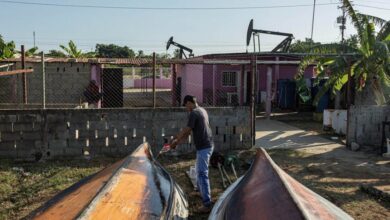The Amazon rainforest, a forgotten giant
Policies that seek to sanction emissions and reduce contamination of the air, water, and soil matrices will not be of any use if the deforestation of the Amazon continues to be allowed

Much has been said about the threats that the world’s largest forest area, the Amazon, which (according to the IGAC) with 7.4 million square km of extension represents 4.9% of the world’s continental area, must fight daily. Its jurisdiction depends on Bolivia, Brazil, Colombia, Ecuador, Guyana, Peru, Suriname and Venezuela, each with environmental policies and territorial management so diverse that it is impossible to generate uniform public policies that allow or encourage their conservation; this without considering the fact that pressures from anthropogenic activities have generated high rates of deforestation. Proof of this is that, according to the IDEAM, between 2005 and 2010, the Amazon recorded an annual loss of 79,800 hectares of forest.
Although today it has protection figures such as indigenous reserves, national parks and forest reserve areas, while the threats derived from extractive and unproductive economic dynamics do not generate the expected quality of life, if they progressively destroy ecosystems and their riches. According to ECLAC, the main drivers of deforestation are the expansion of the agricultural frontier, extensive cattle ranching, forest fires, and felling for the sale of wood, which account for 46% of the total loss of forest ecosystems in Colombia. In addition to traditional engines, the country has dynamics such as colonization and population displacement, mining, and the cultivation of illicit crops, which increase the pressure on the Amazon forest.
What does this mean for us?
The University of Talca in Chile mentions in a study focused on the determinants of deforestation in the Amazon, which among the main and most worrying consequences of the loss of the Amazon are soil erosion, water and air pollution, dioxide release of carbon in the atmosphere, loss of biodiversity due to extinction of plants and animals, increase in the warming of the earth’s crust and massive flooding. This added to the fact that it can modify the behavior of rainfall in places not geographically linked to it.
This necessarily means that the extinction of the Amazon is a problem that concerns us all, policies that seek to sanction emissions and reduce contamination of air, water and soil matrices if the Amazon and the Amazon are forest areas in general, because humanity will see much earlier and much more serious consequences of climate change. Not only species and water sources will be lost, but with these, the ability to adapt to changes in climate, as well as areas of absorption and capture of emissions of polluting gases. As mentioned in a study conducted by the Amazon Cooperation Treaty Organization (ACTO) and UNEP, only in the region, environmental degradation is reducing human well-being, which is expressed in the increase in the incidence of diseases in the population , the increase in operating costs of economic activities, the worsening of social conflicts, and the increase in vulnerability to climate change.
Latin American Post | Maria Isabel Cusgüen Gomez
Translated from “La Amazonía, un gigante olvidado”





